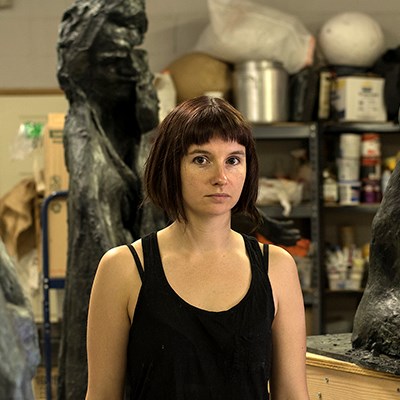
Liz Glynn (Art MFA 08)
I came out of my undergrad at Harvard knowing that, if nothing else, I could stay in the studio all night, work myself into a corner, and throw myself at building something. What was great about CalArts is that it broke all those habits and proved to me that it wasn’t just the labor that was going to fix the work. It opened me up to different ways of looking at the ideas behind the work, and how to address those before making anything. At CalArts I realized that I was more interested in the process of production. My work is research-driven. I’m not wedded to the idea of stylistic consistency, but there’s an underlying idea that human action matters and can shape the physical world, and by extension, metaphorically, the political and social reality that we inhabit.
I got so much out of being at CalArts and learning many different logics of critique, and the process of deconstructing a work and figuring out how to put it back together. I don’t think most other institutions would ever dare go that deep. To have that as a professional artist, later on, is incredibly important because there’s so much that’s pushing you in the direction of maintaining consistency. But the only way to make progress is to have these moments of destruction and teardown.
Many of the artists I now teach with as colleagues are CalArts alumni. At any given museum opening, I’m surrounded by them. It’s an honor to be part of that legacy of artists, and it’s also one group of alumni that maintains a critical conversation long after graduating. I think that’s really important.